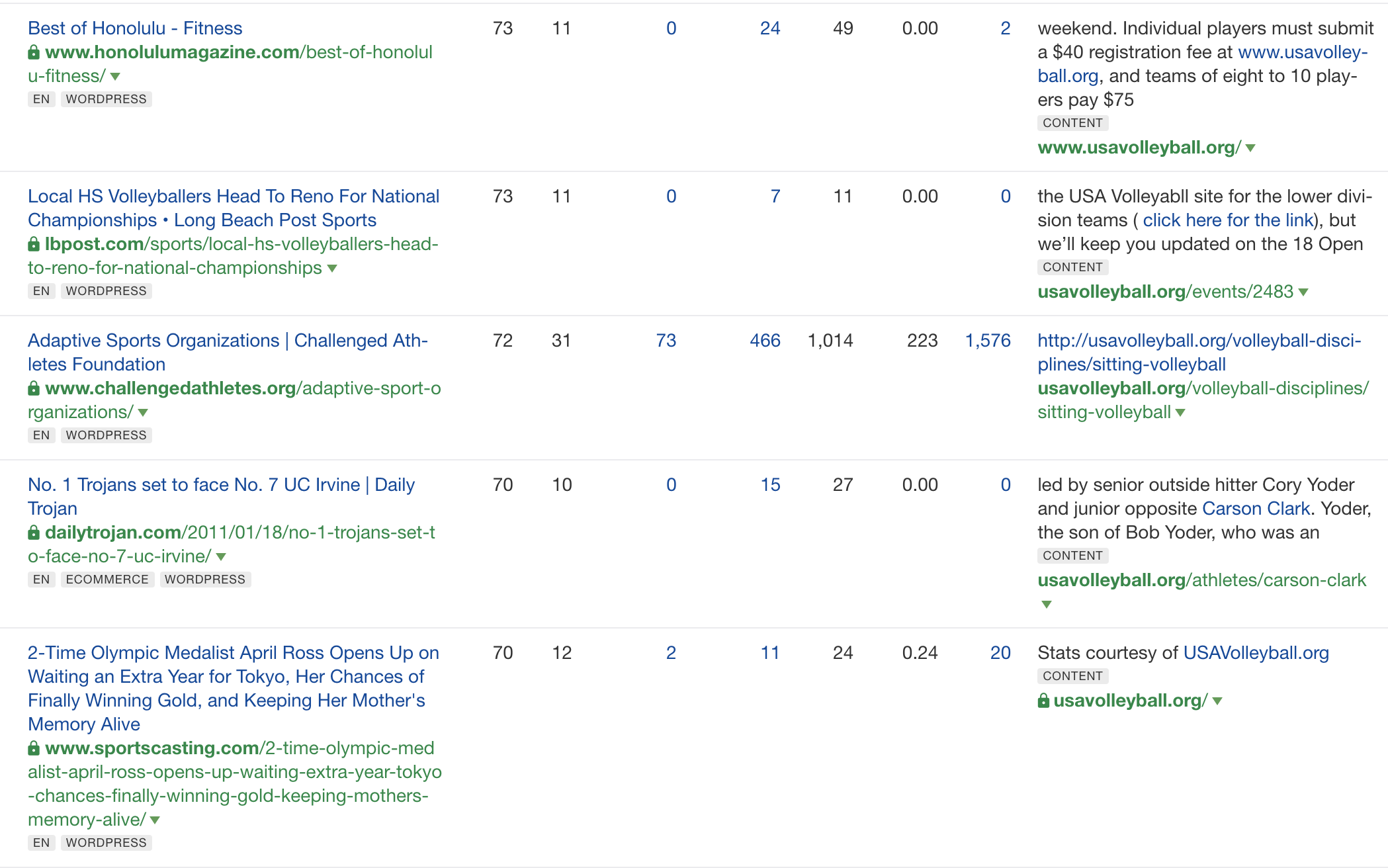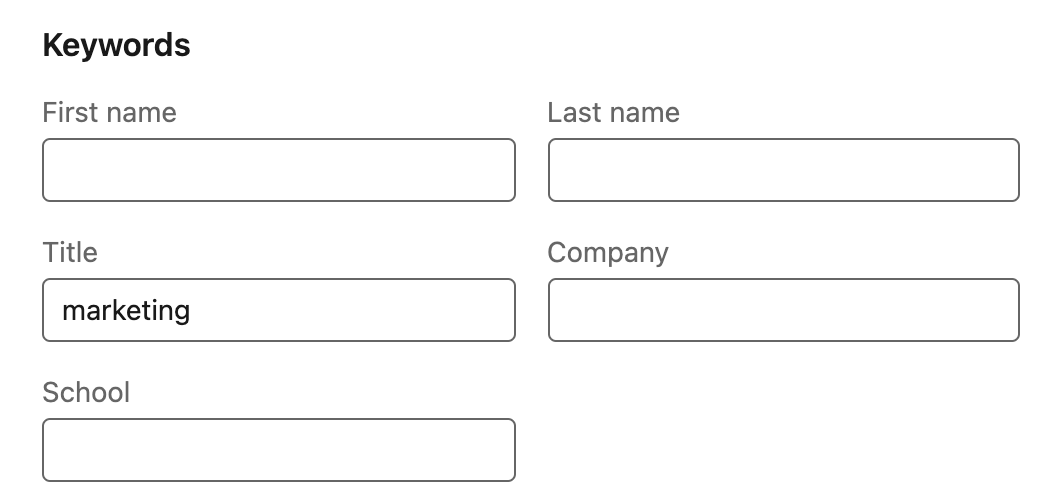Another way to improve your ranking in search results is to increase the domain authority of your site, which is a measure of how credible your site is when compared to others. The more other people link to your club’s website, the more authoritative it becomes in the eyes of Google.
In essence, if Google sees that more and more sites begin to link back to your site over time, it’ll assume that you have content that needs to be showcased more prominently in the search results, thus giving you a boost in your search ranking.
In the previous module, you learned how to improve your SEO by creating internal links between your pages. In this module, you’ll learn how to go about getting other sites to create external links back to your club’s website.
What is an external linking strategy?
An external linking strategy is a long-term plan to drive links to your site from other websites. There are four main tactics that you could use as part of your strategy:
- Writing content on your site of high interest to the audience of the linking site
- Writing a guest post on another site that links back to yours
- Getting some influential figure within your club, say a well-known coach or a promising athlete interviewed by another site, with the resulting article linking back to your website
- Linking to a page on another website (making sure their content is relevant to yours) and in exchange ask them to link to a page on your site (again, relevance is key!)
Any of the above four tactics will result in a backlink to your site. If you choose the route of the guest post or the interview article, make sure to share with as many people as you can via your social media accounts and your email list.
Why is an external linking strategy important for SEO
External links are important for SEO in a few ways. First and foremost, backlinks from sites with high domain authority are an important ranking signal for Google, because they count as votes of confidence towards your content.
Also, if mentions of pages from your site begin to pop up on influential websites, there’s a good chance that other sites will see your pages as well and link directly to them, earning you more backlinks that you didn’t even have to solicit.
Finally, when links to your pages appear on high-traffic sites, you’ll get a share of their traffic, and traffic growth is also a Google ranking signal. The more people that visit your club’s website, the easier it gets to rank high on search results — success feeds success.
How to improve your chances of gaining backlinks from other websites
When it comes to getting backlinks, the secret lies in building relationships and offering value in exchange for your link.
Since many sports clubs aren’t for-profit, commercial enterprises and have an altruistic mission (to improve the lives of our youth through healthy sports competition), it’s much easier to obtain backlinks.
All you have to do is to target the right organizations, that is, those that share your same target audience and that are naturally inclined to support your mission.
Then, you need to make sure that you identify the right contact inside the organization. If you pitch to the wrong person, there’s a good chance your emails will go unanswered.
Finally, you need to offer a proposal that’s mutually beneficial. If all you do is ask for a link without offering anything in return, you won’t get good results.
How to implement a successful external linking strategy
In order to implement a successful external linking strategy, you need to follow 5 steps:
1. Leverage your existing relationships
When it comes to getting backlinks quickly, the path of least resistance is to reach out to the people you already know.
Contact everyone who knows you personally or who’s linked in some way to your club and has access to a website with a higher domain authority than yours and ask them if they would kindly link to pages on your site (mutual benefit is not as critical here.)
Make sure, however, that the backlinks are relevant to your content and not just random links (Google’s algorithm can easily detect context and ignore backlinks that they deem to be spammy or “unnatural”).
2. Find who’s linking to your online competitors
Once you exhaust your network of personal contacts, then it’s time to go out into the world.
The best way to find prospects that might be interested in linking to pages on your club’s website is to use one of the many popular SEO tools — Ahrefs, SEMRush, Moz, etc.
These tools will show the backlinks pointing to any website that you enter in their search field. So, if you enter the URL of a competitor that has high domain authority, the tool will show you all the backlinks that their site has amassed over time.
Here’s an example:
Say, you want to know who’s backlinking to usavolleyball.org. You would enter their URL into an SEO tool (for this example I’m using Ahrefs), choose Backlinks from the navigation menu and then get this handy list:
So, if you wanted to promote the volleyball pages on your club’s site, then it would be a good idea to reach out to the websites shown on the left column, provided they’re not directly competing with you (i.e. same sport, same territory.)
3. Reach out to them
Next, it’s time to find out who the right contact person is so you can reach out to them directly.
The best way to find this information is to do a company search on LinkedIn. For example, say you want to find the best person to contact for challengedathletes.org (third row above), then you would enter this information on the LinkedIn search box as follows:
Then, select “See all xxx employees on LinkedIn”:
And finally, finetune your search by adding the keyword marketing under the “Title” heading...
...to find your contact:
Now, all you have to do is to use a tool like Hunter.io to find this person’s email address and presto!
4. Decide on your external linking strategy
Your next job is to decide what external linking strategy you’re going to pitch to your contact.
As we mentioned before, you have four main choices to select from: 1) offering content on your site that’s relevant to their audience, 2) writing a guest post on their site linking back to yours, 3) offering an influential person in your club or your community as an interview subject and 4) offering to do a link swap.
Once you make your choice, email your contact, introduce yourself, and pitch them your idea. Now, not everybody will say yes since you’re cold-emailing them, but a good 10-20% will, so be mentally prepared for some rejection — this is a numbers game after all.
5. Firm up the agreement and implement it
Once you get a yes, negotiate on the terms, agree on the timeline and make sure to deliver what you promised on time!
After the backlink goes live, remember to reach out to your contact to thank them. Now, you’ve built an important new relationship in the world of SEO that’ll help you boost your Google search ranking for years to come.
Finally, when it comes to link-building strategies there are certain rules you need to follow — things that you should always strive to do and things that you should never do.
External Linking Do’s:
- Use a variety of backlinks to appear “natural” to Google
- Always obtain backlinks from sites that have a higher domain authority than yours
- Use a mix of external linking strategies
External Linking Don'ts:
- Don’t link robotically, i.e. always using the same anchor text (Google will think you’re trying to game the system!)
- Don’t stick to just a single external linking strategy. i.e. guest posts only
- Never miss submission deadlines!
Next Steps
You’re getting close to the end of the series! If you’ve been following it from the beginning, you’ve now completed Module 6 out of 7. One more module and you’ll be ready for graduation! (click here for Module 1, Module 2, Module 3, Module 4, Module 5 and the program overview).
In Module 7, we’ll wrap up the series by teaching you how to measure your SEO success through different reports on the Google Search Console.
See you then!













